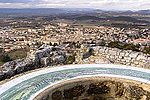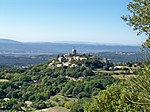Roman Catholic Diocese of Saint-Paul-Trois-Châteaux
1801 disestablishments in France6th-century establishments in FranciaAccuracy disputes from July 2024All accuracy disputesDioceses established in the 6th century ... and 1 more
Former Roman Catholic dioceses in France

The former French Roman Catholic Diocese of Saint-Paul-Trois-Châteaux (Latin: Dioecesis Sancti Pauli Tricastinorum; French: Diocèse de Saint-Paul-Trois-Châteaux), sometimes, just like the town, also known as the Diocese of Saint-Paul-en-Tricastin (Latin: Dioecesis Sancti Pauli Tricastinorum; French: Diocèse de Saint-Paul-en-Tricastin), existed from the sixth century to the French Revolution. Its see was at Saint-Paul-Trois-Châteaux, in the modern department of Drôme, southern France. Its territory was included in the expanded Diocese of Valence, by the Napoleonic Concordat of 1801.
Excerpt from the Wikipedia article Roman Catholic Diocese of Saint-Paul-Trois-Châteaux (License: CC BY-SA 3.0, Authors, Images).Roman Catholic Diocese of Saint-Paul-Trois-Châteaux
Rue de la Pousterle, Nyons
Geographical coordinates (GPS) Address Nearby Places Show on map
Geographical coordinates (GPS)
| Latitude | Longitude |
|---|---|
| N 44.35 ° | E 4.77 ° |
Address
Rue de la Pousterle 2
26130 Nyons
Auvergne-Rhône-Alpes, France
Open on Google Maps







